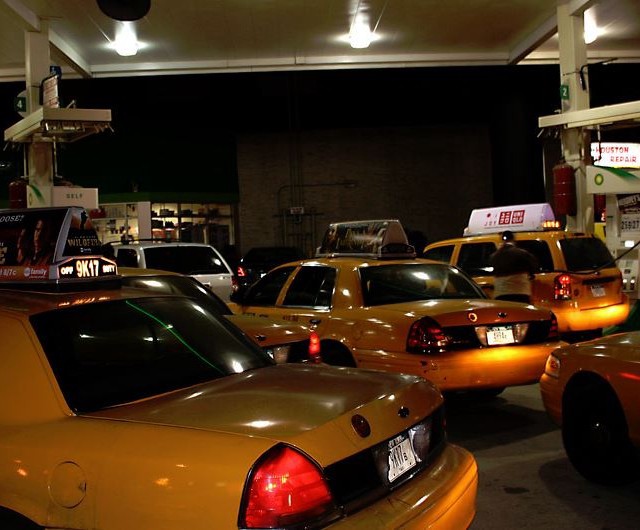New Manhattan Doesn't Need Gas Stations

There are 39 gas stations left in Manhattan, down from 60 in 2004. Just 12 of these stations are below 96th Street. This is not because people aren’t driving, or because cars are becoming more efficient, or because the public transportation system has expanded. It is a small problem created by a much larger problem, which is itself a symptom of enormous problems:
Thanks to skyrocketing real estate prices, Manhattan gas stations are worth much more than the money the owner can make selling gas. Last year, a Getty near the High Line sold for $23.5 million. A few months later, another station in the borough went for $25 million.
Developers love gas stations because they’re on corners and along major thoroughfares, and in a town of skyscrapers, their one-story buildings are easy to tear down.
This is New York real estate conventional wisdom, more or less: Gas stations are just empty lots that other people have been saving for you. From a 1985 Times piece called “ACTIVE BUYERS; SPOTTING THE DEALS ALL OVER TOWN”:
The successful real-estate operator must have an intimate knowledge of locations. ‘’You’ve got to be able to make a judgment instantly and you’ve got to be capable of concluding a contract in a day or two tops,’’ said Mr. Goldstein. ‘’If you can’t perform that fast, you can’t compete in this market.’’
One who has been competing actively in the last year is Mr. Shapolsky, who at 43 has been in the business since 1962, in partnership with his brother, Allan. Their father was an apartment renovator who also bought and sold buildings. The Shapolskys avoid rental apartments, but they buy commercial warehouses, garages, parking lots, industrial buildings, gas stations, vacant apartment buildings and vacant land.
A 2004 article about the decline of the Manhattan gas station starts: “Note to motorists: Do not become attached to a gas station in Manhattan. It could be replaced by an apartment building tomorrow.”
So it’s an old trend! But it’s a downward trend, which means it has an absolute endpoint. In the article from 2004, taxi drivers were already complaining about hour-long waits and lost wages. “Last week at Houston and Lafayette,” one driver said, “they didn’t have gas.” Skip forward to today:
Farther downtown, two other stations are already on their last legs. The BP at Houston and Lafayette is expected to close this year to make way for a seven-story retail and office complex. A Mobil Station in Alphabet City is also expected to close shop.
This station will be overwhelmed with patrons until the day it closes.
What happens where there are practically no gas stations at all?It’s an interesting thing to consider! Manhattan gas prices can only go up so far before it’s always worth it to leave the borough to fill up elswhere — the rate at which gas stations are closing is not mirrored by an increase in profitability for remaining gas stations. It’s possible that, at a certain level of real estate insanity, gas stations will simply not be welcome at all, like front lawns and parking lots.
Owning a car in the city will become less attractive, I guess? Driving a car for a living will become harder and less profitable, which will have to be factored into riders’ prices, which will take a long time (because the TLC works slow, and because Uber is trying to destroy it) and deter people from riding in general. These are both bad things for some people but… maybe good things for Manhattan? No gas station will ever be as valuable as a 20-story luxury mixed retail/residential luxury tower, so it’s conceivable that virtually all conveniently located gas stations in Manhattan could be replaced. Future New York might be filled with the relatives of Russian plutocrats, who will find a way to be driven everywhere regardless, but future New York might also have fewer cars and less traffic! A pedestrian paradise. A biker’s dream! At least the last few decades before New York is swallowed by the sea will be great for commuters.
Photo by Ianqui Doodle
